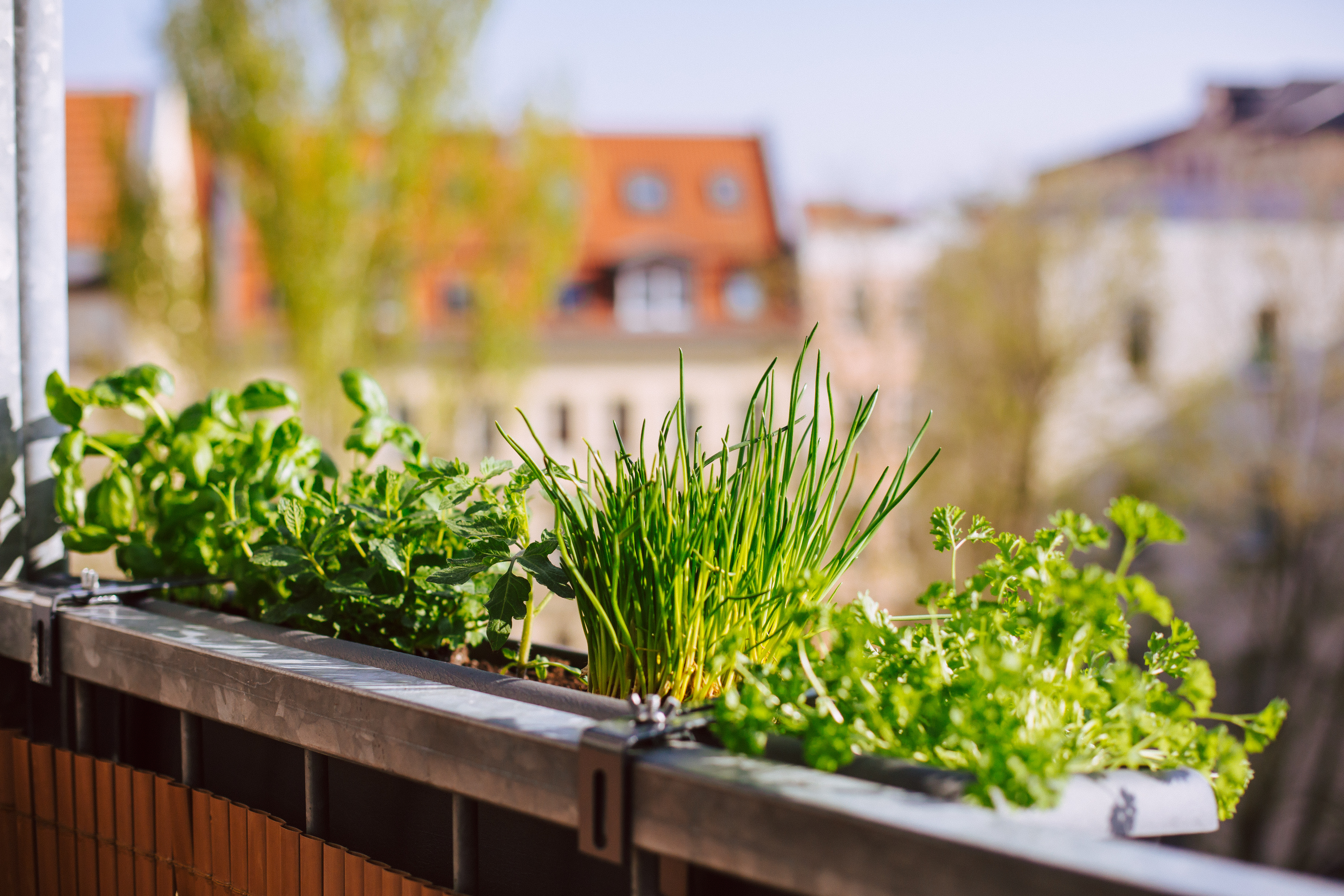
Some dishes are not possible without fresh herbs.
Such as a Caprese salad or margarita pizza, they are not the same without fresh basil. Topping chicken alfredo without fresh parsley just isn't the same. Impress yourself or a guest when you serve mint mojitos with fresh mint in December, it will burst with flavor!
I absolutely love tossing roasted veggies with a mix of fresh parsley, thyme, and rosemary will be uplifting during the long winter months. I love herbs in the kitchen, and herbs in the kitchen that are fresh and grown by myself are so much more satisfying.
Using fresh herbs can go beyond the dish and enhance our lifestyle and lower the cost of grocery visits. Fresh herbs are also higher in nutrients, helping us better sustain ourselves and our family’s health.
Growing herbs inside year-round can help brighten up a room, and the simple act of tending herbs indoors can lighten the mood. You can easily grow many kinds of herbs indoors such as Basil, Mint, Chives, Rosemary, Oregano, Parsley, Sage, Thyme, Cilantro, Bay, and many more. Starting an indoor herb garden is simple and there are many different routes you can take.
A lot will depend on the amount of light you can provide to your herb garden. You absolutely cannot grow more than space, and light conditions you have available. If your windowsill doesn’t provide at least 6 hours of light, you will need to invest in growing lights. Herbs will lack flavor, and have poor growth, if any, under poor light conditions.
LEDs(light-emitting diodes) have become popular for use among homeowners and professionals, and in the past few years have become quite affordable. The most important aspect of a grow light is the spectrum of light it emits, plants use a lot of red and blue light, so make sure to be using a light that was manufactured to emit the right type of light.
Once you consider your available light either from sunlight or artificial, you need to acquire containers and a soilless medium to grow some herbs in. There are also multiple kits to make starting herbs super easy.
The container you use will need to be at least 6’’ deep to provide adequate room for the roots to grow, and wide or long enough to accommodate what you want to grow in it, remember plants need space as they grow. Make sure when growing indoors to have a saucer underneath each pot catching the extra water than could otherwise damage your home.
When choosing the medium to grow in, choose a soilless medium to help prevent diseases that can linger from our garden soils. Soilless mediums will also provide proper drainage and water retention to have healthy roots and thus vigorous leafy growth. Most mixes provide some type of plant nutrients such as worm castings or bat guano to help get started. Along with the mix, find an organic fertilizer, liquid or granular, to feed the plants as they become more robust.
Make sure you are growing the herbs you use the most. There doesn’t seem to be a reason, beyond the joys of growing, to have a certain herb, if you do not ever use it in the kitchen. So, save that space for one, you will use the most.
- Grow near a sunny window or under artificial light in the home. Try and avoid drafts that can slow or harm our herbs.
- Choose either seeds or transplants of your chosen herbs. Seeds will cost less than transplants but take longer to get to full size. For herbs such as basil or dill, starting new seeds every few months can help keep a fresh crop available. Some herbs such as bay can last a longer time, and be trimmed uniquely, adding character to a room.
- Choose a container that’s at least 6’’ deep, giving roots enough room to grow. Parsley will grow best if its taproot has enough room to grow, so, shoot for 8’’ or more inches. Choosing a pot that has enough room for a few different varieties of herbs will look nice and help save space.
- Find your favorite soilless potting mix and moisten it will a small amount of water. Fill 2-3’’ of your container with your potting mix.
- Removing your herb from its tray, flare out the roots a little and place it into its new home.
- Finish filling in with potting mix around the roots while gently pressing the soilless medium around the roots, this helps achieve root and growing medium contact and eliminating air pockets.
- Give transplants time to adjust and grow new roots before you start to harvest any for the kitchen. Water them sparingly, avoiding letting the roots sit in soppy and wet soil. Most herbs benefit in growth and flavor, from drier conditions.
- Feed with a granular fertilizer every month, or liquid every few weeks. Using ½ the recommended strength can help enhance the flavors of your herbs.
- Harvest by snipping 2-3 inches off the top of your plants, giving them sometime between snipping to grow back. Never take more than 1/3 of your herb, this may cause more stress and your herbs might not come back as fast, or healthy.
